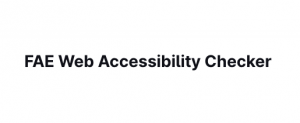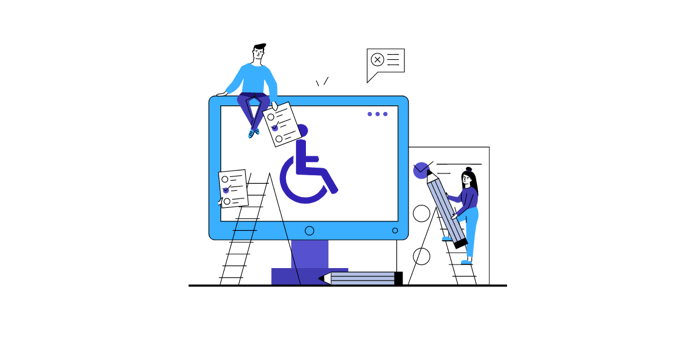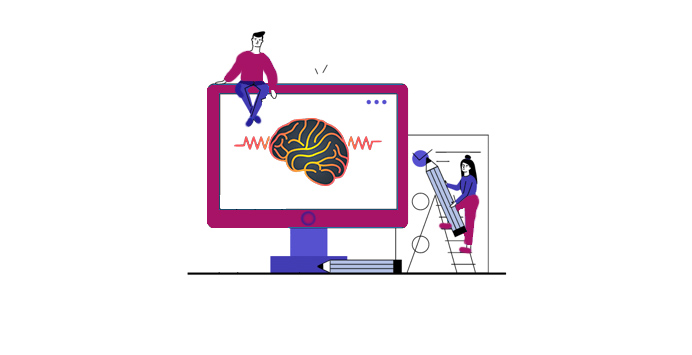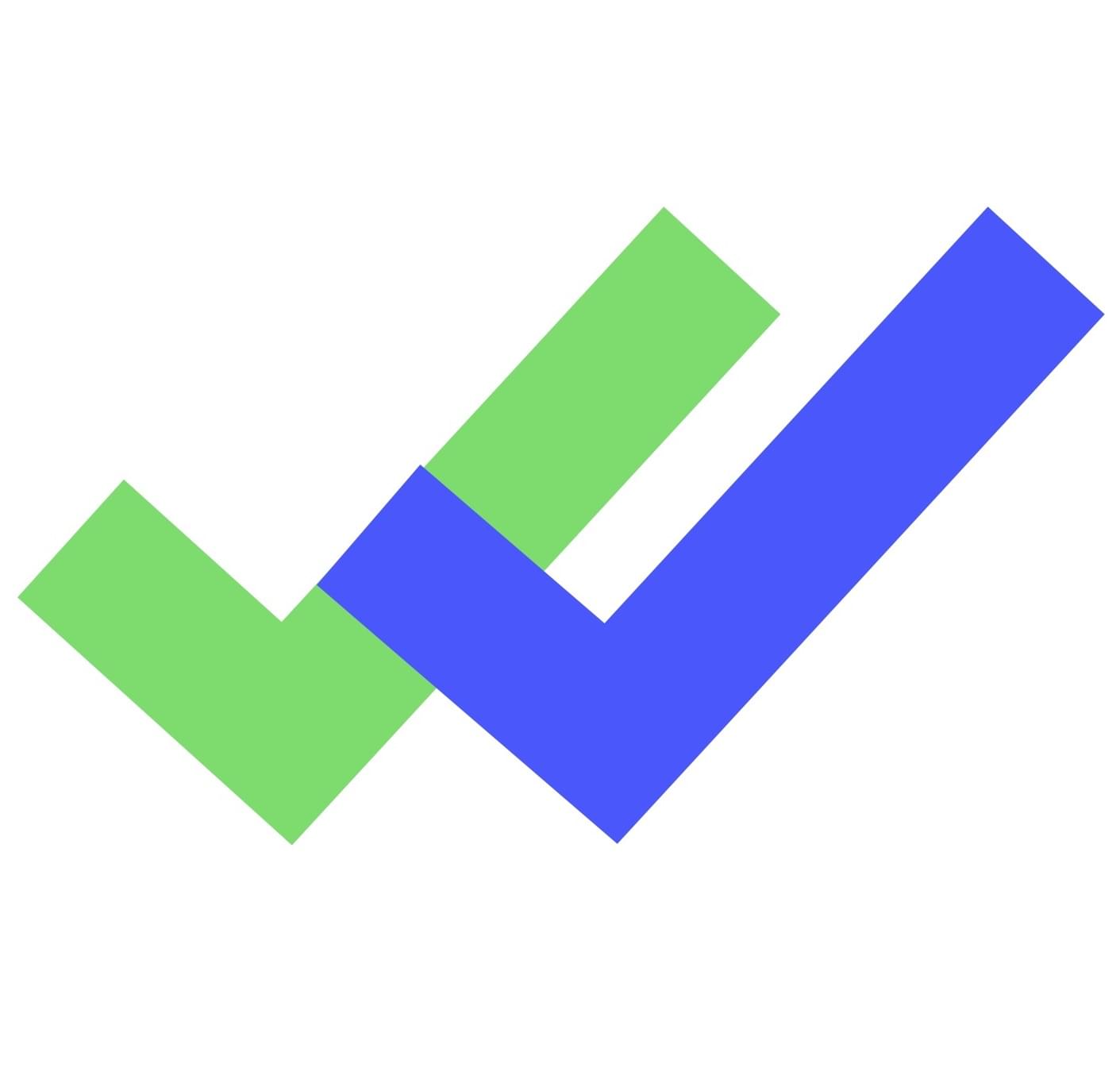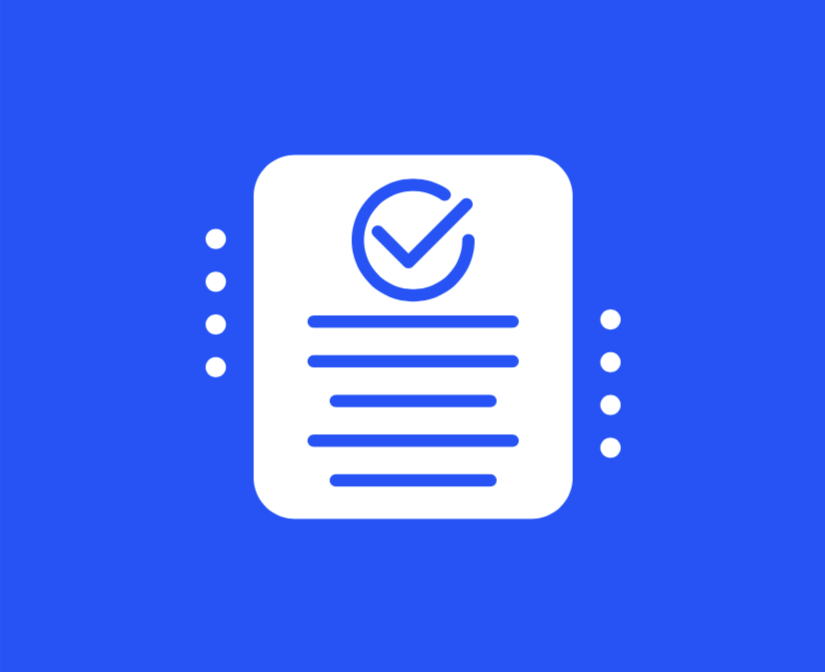
Making your website equally accessible for everyone requires more effort than it initially seems. Over the years, web accessibility standards and regulations have grown in numbers.
In modern times, it gets rather tough not to implement these standards and regulations on your website. The reason for this also lies in the fact that website owners could face lawsuits for disobeying the accessibility standards.
The first web accessibility standards were enforced by the W3C. Ever since then, updates and new standards have been issued every year. Now, we have several sets of accessibility standards that are legally enforced. These standards help to bring the internet closer to people with partial or complete disabilities. That being said, we’ll go over the most important web accessibility standards and explain them.
The meaning and importance of web accessibility standards
The accessibility standards represent a list of published accessibility requirements that website owners should obey. By agreeing with these standards, site owners can not only avoid lawsuits, but they could also greatly expand their number of visitors.
Once the World Wide Web Consortium started issuing these standards, the world’s state governments started enforcing them. Now, almost every country in the world has specific regulations regarding these standards.
However, it all started with four basic principles of web accessibility published by W3C:
- Web content should be made perceivable
- The content must be operable by everyone
- Page layout should be robust
- Most importantly, web content should be understandable
The W3C started its web accessibility mission with these four aspects in mind. However, over the years, the standards have further developed.
The W3C afterward gave their list of the crucial web accessibility components. The list included several factors:
- Content in terms of information, text, and structure
- Webpages as individual sites
- Web browsers and media
- Accessibility tools
- HTML and CSS validators
Based on all these factors, the WCAG shortly assembled the first list of web accessibility standards.
The relation between web accessibility components
The whole web accessibility system can be divided into two main categories – the developers and the users. Developers are equally responsible for creating accessible content as website owners are for making the site accessible. Namely, web developers make use of the authoring and evaluation tools to create and publish content.
Once the web content has been created, it’s usually published on websites or pages. On the other side, users aim to access the web content on the pages. When it comes to disabled users, they use browsers and assistive tools to access the content. This way, the key accessibility components of W3C are connected, and the standards are published based on this relation.
Website accessibility standards over the years
The W3C consortium started its work on website accessibility standards during the 2000s. Back in 2000, the W3C proposed its first set of web accessibility standards – WCAG 1.0. Until 2008, the standards and regulations had already become legally enforced.
This period marks a significant era in the publishing of web accessibility standards. The W3C, together with its partners, ensured the three types of web accessibility standards:
- Web Content Accessibility Guidelines – WCAG
- Authoring Tool Accessibility guidelines – ATAG
- User Agent Accessibility guidelines – UAAG
These guidelines are deeply connected to the mentioned relation between accessibility components. Let’s go over them one by one to help the users better understand the guidelines. First off, the WCAG guidelines are made for web content by the W3C. They are used by the developers to create accessible content on website pages for all disability types.
On the other hand, the ATAG guidelines are firmly connected with authoring tools that developers use. Finally, the UAAG guidelines relate to web pages, browsers, and other types of web access tools. Combined, these three sets of guidelines shape the current web accessibility. Each type of guideline includes a specific set of regulations, but more on that later.
When it comes to the first web accessibility standards enforced, we have the ADA act in the US. The Americans with disabilities act included a set of WCAG 2.0 guidelines by W3C. This way, the US became one of the world’s first regions to implement web accessibility standards. After that, we’ve seen more and more of such standards being implemented across the globe.
Website accessibility standards currently in use
After the first implementation of the ADA act, we’ve seen numerous implementations of the WCAG standards. The first set of standards included a special focus on aspects that may trouble persons with low motoric skills, impaired vision, cognitive difficulties, and low hearing abilities.
A European set of web accessibility standards also relies on WCAG 2.0. This set of standards is referred to as EN 301 549. A similar set of standards is also applied in Australia, as they came up with their variant of EN 301 549. Soon enough, state governments all over the world followed the example set by the ADA act.
Interestingly enough, the majority of the web accessibility standards all over the world rely on WCAG 2.0, which later evolved to WCAG 2.1. The WCAG web accessibility standards strictly involve the following aspects:
- Visual and audio disabilities
- Physical disabilities
- Cognitive disabilities
- Disabilities of speech
- Physical disabilities
It doesn’t require being an expert in web accessibility to understand how many people these regulations helped. Website visitors with all these difficulties can now access the web content normally, without any issues. Moreover, additional assistive tools have been developed to aid this cause.
The level of web accessibility standards explained
Now that website visitors are familiar with the WCAG 2.0 and WCAG 2.1 standards, let’s discuss the level of the standards. Of course, the WCAG 2.1 standards are just an updated version of WCAG 2.0. Namely, some of the biggest changes in the standards included improvements in mobile accessibility, low vision, and cognitive disabilities.
However, it’s also important to understand the level of web accessibility standards. Usually, all the WCAG web accessibility standards involve at least an AA level of standards. Even so, some standards feature the A level of regulations. The A level involves the minimum level of the standard requirements. Simultaneously, this level is there to enable users with partial or temporary disabilities.
On the other hand, the AA level is somewhat more serious as it reflects more radical changes. It is based on the needs of users with disabilities on a higher level than the A level. It also involves the assistive technologies and tools implemented by developers. Finally, the AAA level of web accessibility standards reflects the complete package of standards. This level is a goal of every website owner as it confirms that the site is equally accessible for everyone.
Benefits of using the web accessibility standards
Without the web accessibility standards, people with disabilities would never get to use the web services on an equal level. The level A web accessibility standards include finding the alternatives for written text. Moreover, if the site is audio-only, replacements are proposed likewise.
Another point of focus of the main web accessibility standards is to provide a clear and logical structure of websites. The content should be following logical order to avoid misconceptions and confusion.
Furthermore, content that’s colored in a way that could cause seizures is forbidden. The level AA of the web accessibility standards brings more changes. Namely, captions for videos are included; the color contrast is limited to at least a 4.5:1 ratio, and the focus is on full keyboard control.
Ultimately, the AAA level included great changes involving the reading level, on-site navigation elements, and many more. The contrast ratio between the text and the background is set for 7:1. Also, the sign language interpretation is ensured.
Moreover, all the site visitors from the age of 9 should easily understand the content. This way, the content of the site can truly be easily accessible by everyone. The elements on the site shouldn’t be changing colors and forms unless users have asked for them. Blinking lights and high contrast are forbidden, while magnifying elements should be triggered by clicking.
Conclusion
Overall, web accessibility standards play a crucial role in making the website equally accessible for everyone. No matter the disability type, all users should understand the content in the case at least AA level of WCAG guidelines is included.
On the other hand, the WCAG 2.2 guidelines are proposed, and W3C is thoroughly checking new solutions. Hopefully, website visitors will gain precious knowledge on the subject of web accessibility standards. If you wish to check your website for compliance with the web accessibility standards, try the aCe checker.



